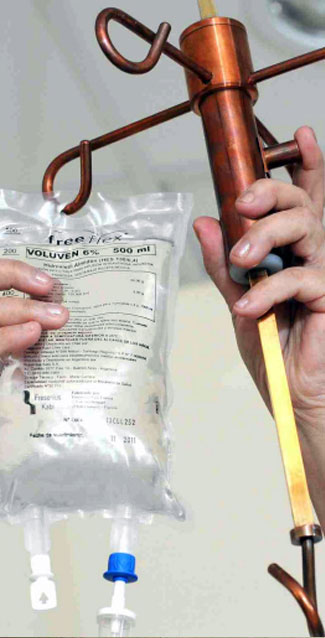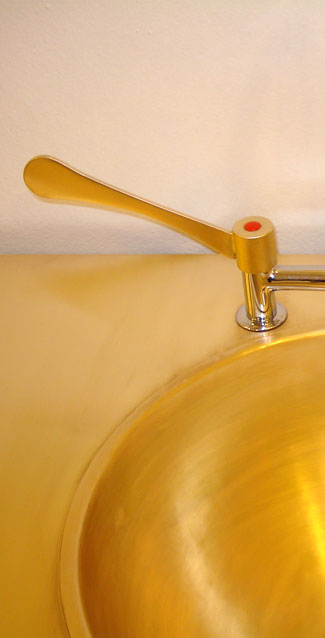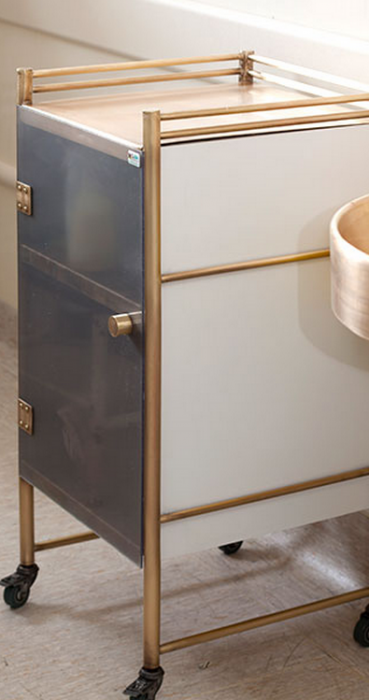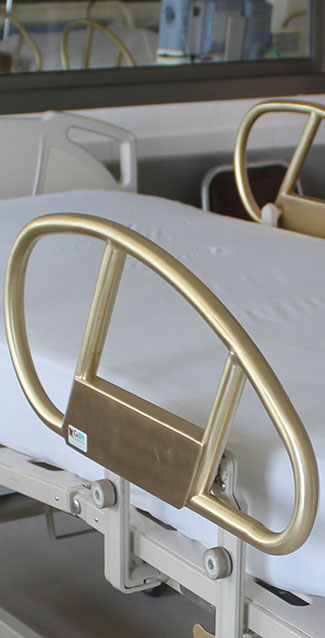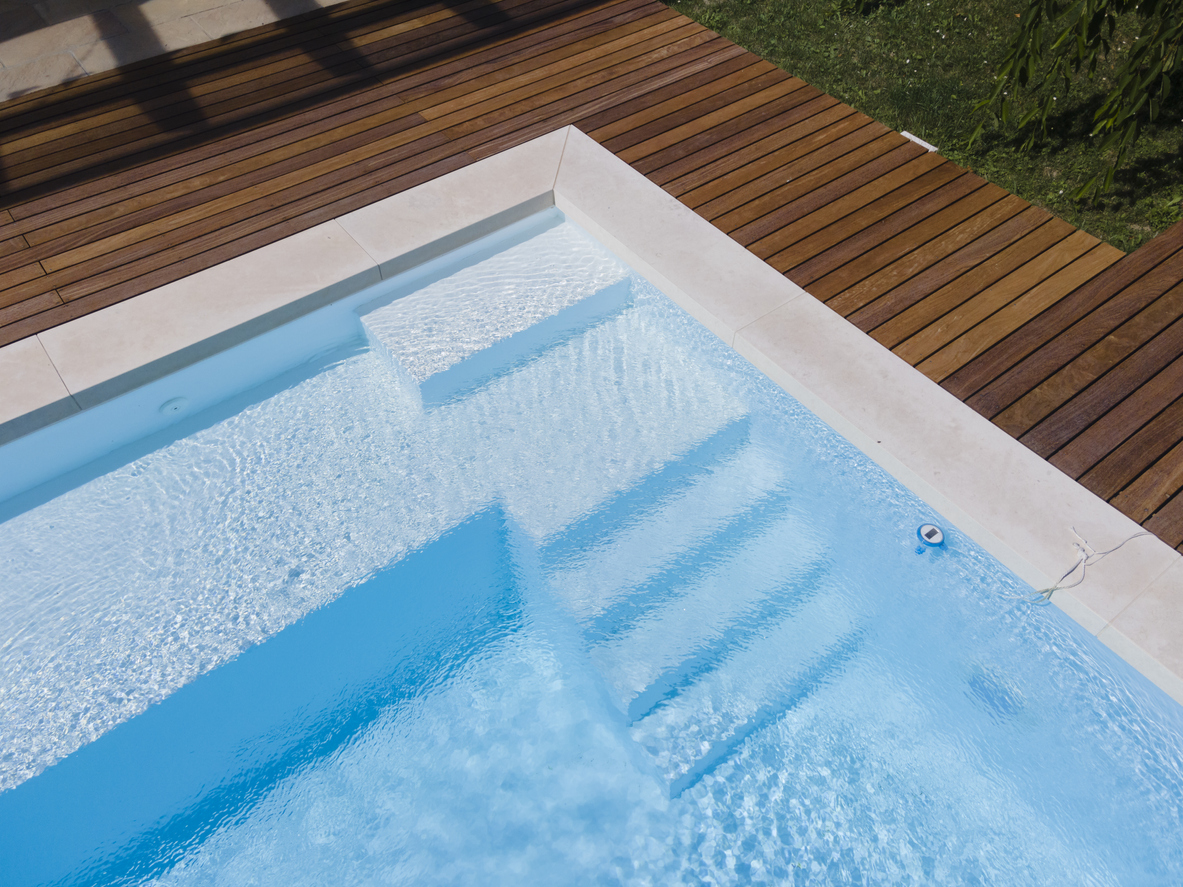Copper is hotter than ever: we’ve seen its warm tones taking over interior design, fashion, makeup, jewelry and tableware. Copper alloys like bronze and brass, have also been making waves across home design magazines. Copper’s warm tones are comforting; when polished it looks edgy and contemporary, when brushed it looks soft and sophisticated. This pliable metal is one of the few metals that doesn’t require smelting, so historically it was an easy metal to work with. Copper has always been viewed as a valuable and expensive material (have you seen how much a copper pot costs these days?). Known as a great conductor of heat and electricity, we often see it used internally as plumbing or electrical wire. We also see it used in gutters, chimney details and roofing material. We can easily spot aged copper on older buildings by it’s green hue, like the famous Statue of Liberty (the statue took about 30 years to oxidize from the color of a penny to it’s now familiar green).
But did you know that copper is inherently antimicrobial? Copper literally kills bacteria on contact and there is a rising trend to implement its use in spaces like hospitals, commercial buildings, child care facilities and food factories. And considering the current pressure to stop the spread of increasingly antibiotic-resistant bacteria, using copper as a combatant in the war against illness is making a comeback.
Bacteria lives on surfaces
Microorganisms, like E. coli and Methicillin-resistant Staphylococcus aureus (MRSA), are known to live on surfaces (even our skin). From light switches to telephones, hand railings to door knobs, public and private settings can host these microorganisms for extended periods of time. Antibacterial wipes and cleaners are the typical methods of wiping off surfaces and are often our first method of defense. Unfortunately, it’s a known fact that in hospital settings this method is becoming increasingly ineffective.
A brief history of using copper to treat disease
The first recorded use of copper being used specifically for medicinal purposes was mentioned in an Egyptian text known as the Smith Papyrus (2600 – 2200 B.C). The ancient text details the use of copper to treat and sterilize chest wounds as well as drinking water. It’s also known that copper was used throughout ancient Rome, Greece and in Aztec societies to treat all types of medical conditions and ailments. According to the US National Library of Medicine, “In the 19th century, a new awareness of copper’s medical potency was spawned by the observation that copper workers appeared to be immune to cholera in the 1832 and subsequent outbreaks in Paris, France.” Why using copper to heal or stop the spread of disease isn’t more commonly practiced isn’t clear.
How copper kills bacteria
According to Antimicrobial Copper, “Laboratory testing shows that, when cleaned regularly, antimicrobial copper surfaces kill greater than 99.9% of the following bacteria within 2 hours of exposure: MRSA, VRE, Staphylococcus aureus, Enterobacter aerogenes, Pseudomonas aeruginosa, and E. coli O157:H7.” Antimicrobial Copper explains it this way: copper effectively destroys the cell membrane of bacteria in a two-step process. The first is when the direct contact of copper ruptures the outer membrane of the bacteria. After this occurs, the cell is weakened when it loses vital nutrients and water through these “holes” in the outer membrane. Once breached, this outer membrane is bombarded with copper ions, which obstructs the ability for the cell to metabolize. (read the detailed course of cellular destruction here)
Copper usage in hospitals and commercial applications
“Checking into a hospital can boost your chances of infection,” starts a recent article on National Public Radio. “And it doesn’t matter where in the world you’re hospitalized. From the finest to the most rudimentary medical facilities, patients are vulnerable to new infections that have nothing to do with their original medical problem.” Bed rails, handrails and other frequently-touched surfaces in hospitals are already being wiped down with anti-microbial cleaners however, it doesn’t always work. There have been several international clinical studies focusing on the effect of copper in hospitals (you can read these studies here) as well as other facilities.
Using copper in your home
Homeowners are seeking ways to implement the antimicrobial properties of copper in their homes. The easiest adaptation is to switch door knobs and handles (the hardware) to copper products. Rocky Mountain Hardware, based in Hailey, Idaho, offers a wide range of copper products specifically for this reason. Beautifully designed and crafted by hand in the USA, their line is used in public spaces, like hospitals and hotels, as well as residential projects. Their hardware is crafted in conjunction with CuVerro antimicrobial copper materials. “CuVerro® antimicrobial copper is the only solid surface registered and recognized by the U.S. EPA with the inherent ability to kill bacteria that are harmful to human health.” Using copper inside the home is usually reserved for decorative purposes. A copper stove hood or copper gutters is most commonly seen, so are copper pots for cooking and decorative copper table top decor. You can find Rocky Mountain Hardware products at Chown Hardware (view their Porch profile here).
Top image credit: Walker Woodworking


